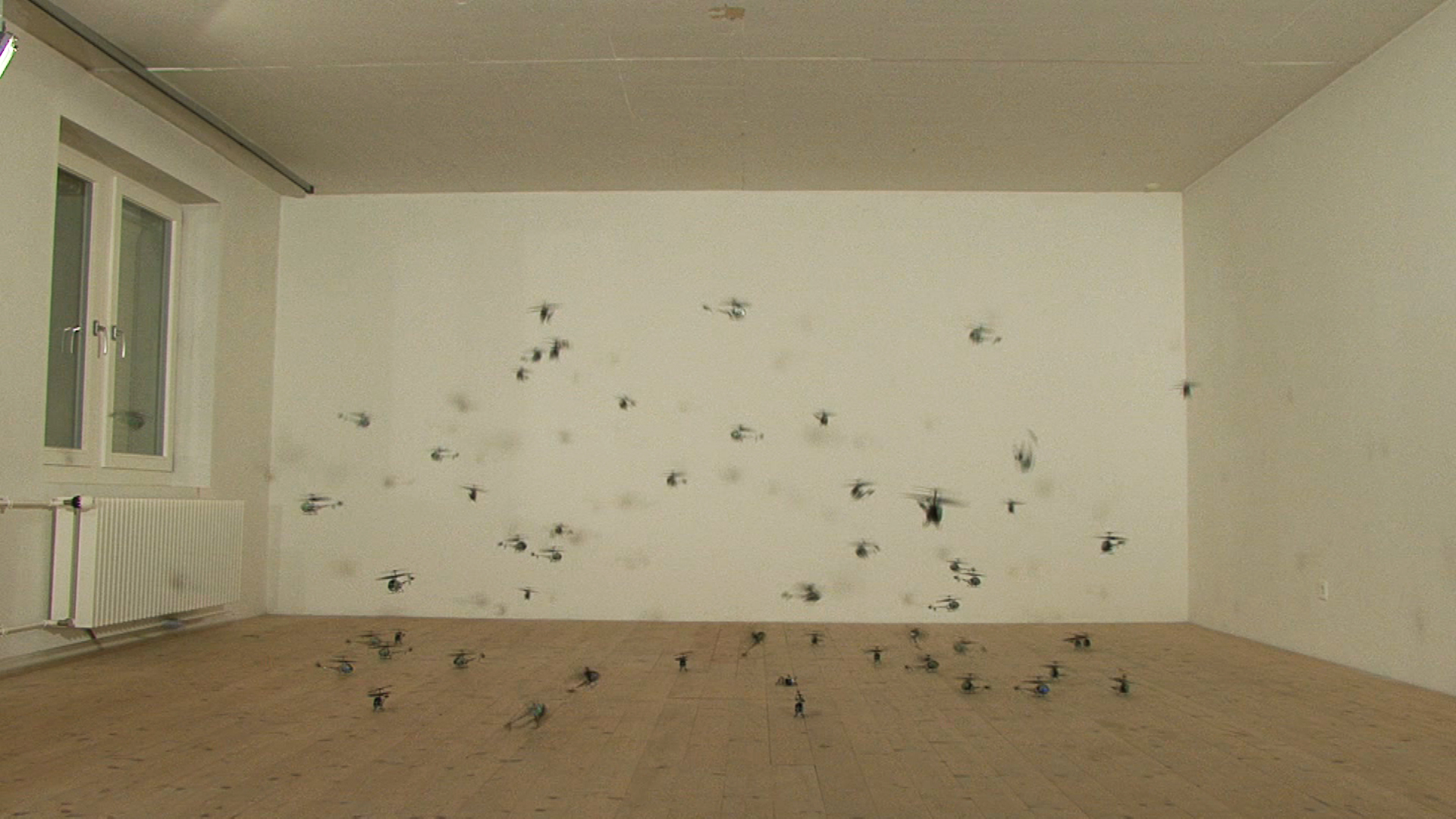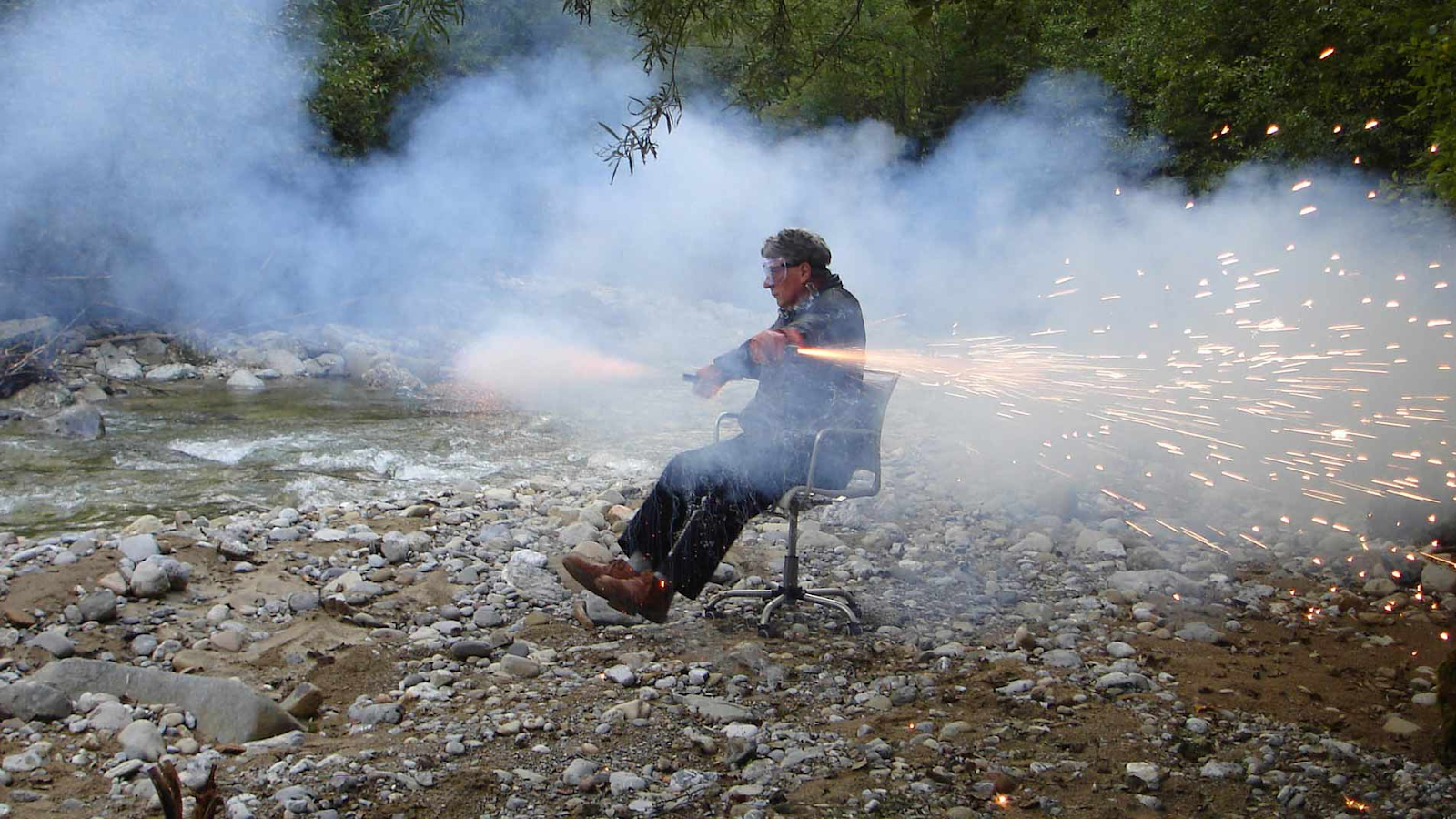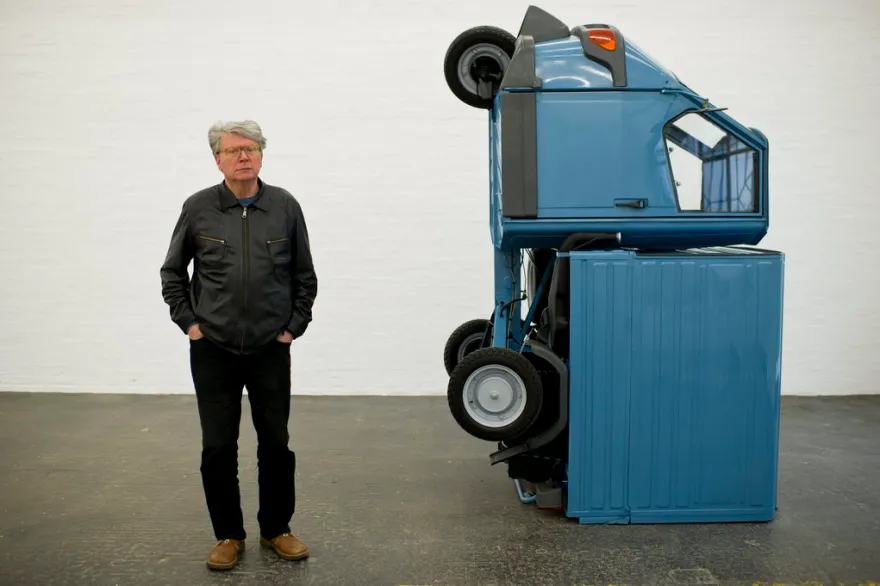What is your definition of a sculpture?
The Oxford dictionary describes it as the art of making three-dimensional representative or abstract forms, especially by carving stone or wood or by casting metal or plaster.
Several famous works include The Thinker, the Terracotta Army, the Great Sphinx of Egypt, and even the Merlion. These works are magnificent in size, meaning, and detail, and they will stand forever for years to come. These are what we call traditional sculptures.
Enter Swiss Artist Roman Signer.
Roman Signer and his works
In 2023, a video emerged from the art exhibition Countdown, demonstrating a stack of ten buckets with sand slowly falling over and spilled sand everywhere. This was one of Signer’s recent works that went viral on TikTok via the Gloss account, garnering 1.7 million likes. However, the majority of the 57.8k thousand comments criticised how something so simple could be considered a sculpture, ridiculing its concept.
Signer has several more works, each as random as the last:
56 Kleine Helikopter (2008) has 56 small helicopter drones flying around a small room, crashing into one another before they all drop down.

Punkt (2006) features Signer sitting close to a small bomb, paintbrush in hand. When it explodes, his flinching creates a single ink splotch on the canvas.
His later art piece, inflation, is chairs leaning on a deflated cushion – which would be inflated and pushed upright. This instance only happens once, and the chairs must be laid onto the deflated cushions again for the next experience.
Roman Signer was born in Appenzell, Switzerland, during the strife of World War II. Roman spent most of his childhood near a river close to his home called the Sitter, where his friends lit fireworks, built dams, and constructed platforms to jump off from.
After the war, he spent 10 years working as a draughtsman until he was invited to an exchange programme at the Academy of Fine Arts in Warsaw, Poland for sculpting – leading to his fascination and eventual experimentation in this medium.
The Concept of Process Art
Why does Signer create these works?
When I first learned of Signer, I was baffled at his artworks – wondering how such simple yet crude-looking experiments can garner such prominence, in a famous museum no less.
As someone who likes to explore art, I initially thought it was just another fad, especially with the ostentatious nature of abstract art. Thus, it was only much later when I discovered that Signer described his work as ‘serious play.’
Roman Signer practises process art – a popular new movement that focuses on the journey of marking the art rather than the finished product. Roman Signer has been at the forefront of this movement for 40 years, with his works essentially being science experiments that allow nature to perform his work.
As one might guess, Signer was not a conventional sculptor. His work highlights the process of how the sculpture came to be, documenting his process to show his tools, setup procedures and of course, his novel approach.
The Bounds of Creativity
As creatives, the end product always seems to matter the most. We are a result-driven industry after all, utilising in-depth analysis to determine the returns on investment of our work.
I am no exception myself, hoping my work will produce worthwhile results. All of my works are an outcome produced for the possibility of becoming noteworthy. Platforms like TikTok have several metrics to measure your popularity; The analysis goes from how many likes and comments it has garnered – to how many seconds is optimal for the video and our word count for hashtags and captions.
Tracking these metrics have caused me to become number-obsessed, my hyperfixation on numbers resulted in a creative burnout for a bit; even when I meticulously executed the project, it would not yield the results I expected, leading to the collapse of my self-imposed expectations.
On the other hand, Signer didn’t bother with numbers and software, preferring to explore how simple objects such as umbrellas, boots, kayaks, and gunpowder could be transformed into new forms that were different enough to be considered something else entirely. Each idea is formed with the item’s potentials and limits taken into consideration.
Another element of his art is nature itself, with Signer simply arranging experiments so a natural force would react with his setup, creating a cause-and-effect experiment. Some of these concepts include a sandbag destroying a record player, ink exploding all over him to create a silhouette, and a car towing him in a kayak on land—he basically has fun with art.

All of this made me wonder: Why was it a sculpture then? My understanding of a sculpture was that it should be something grand, magnificent, and beautiful. How could these works be considered sculptures next to the famous ones discussed earlier?
There is a difference, though one you might not expect: being able to watch the creation come to life. Process art may not be as glamorous as other artworks with more traditional artistic purposes, but I believe that art can come from anywhere, with different intentions.
That’s why his sculptures are considered process art – Signer’s sculptures focus on the beauty of execution and process, coupled with attention to technical skill. Once the process is complete, the sculpture would lay there, mostly undisturbed to retain its natural state. We can imbue meaning into our creations without adhering to traditional artistic methods, as long as our intentions are clear.
This revelation substantiated my work – I made videos to entertain and humour the audience, while lending my agency relevance in the digital sphere. Even though an idea may seem simple, I would spend a significant amount of time deciding the best way to perform it. It was a passion of mine to direct, so the responsibility of creating it meant that it had to be executed well. I experimented with new video angles, techniques, and formats to capture my image – perpetually striving to create my very own magnum opus.
Signer himself did not know why people found his art humorous. However, he was not against it at all, understanding that individual interpretation is unique to each and everyone. In his words, ‘Laughing is allowed, but it’s not required’ – Not everybody can understand the intent behind his art, and he is okay with that.

A Lesson From Signer
The more I come to understand Signer’s work, the more I realise how unappreciative I was of my effort when faced with rejection, fixating solely on the outcome. Dismissive of how much energy I put into the creation process, I overlooked my personal growth, new curiosity, and improved ability.
The philosophy that Roman Signer presented sparked a creativity that I have not felt in a while. It was the idea that focusing on the journey was the treasure, the results come as a bonus. The realisation opened a whole new world for me in an instant.
In retrospect, simple things like our prank videos on TikTok were a blast to film now, with the planning and filming always resulting in roaring laughter from my colleagues and bosses. The editing process gave me the opportunity to share my creation with others, on top of enabling me to pursue my artistic vision by adding my own twist or enhancing the visuals.
We should not be so hard on ourselves when it comes to the outcome, as the journey is like creating art itself. Like the structured artistry of sculptures, the freedom to express oneself should flow naturally, allowing us to embrace our inner Roman Signer and create with unrestrained creativity.














